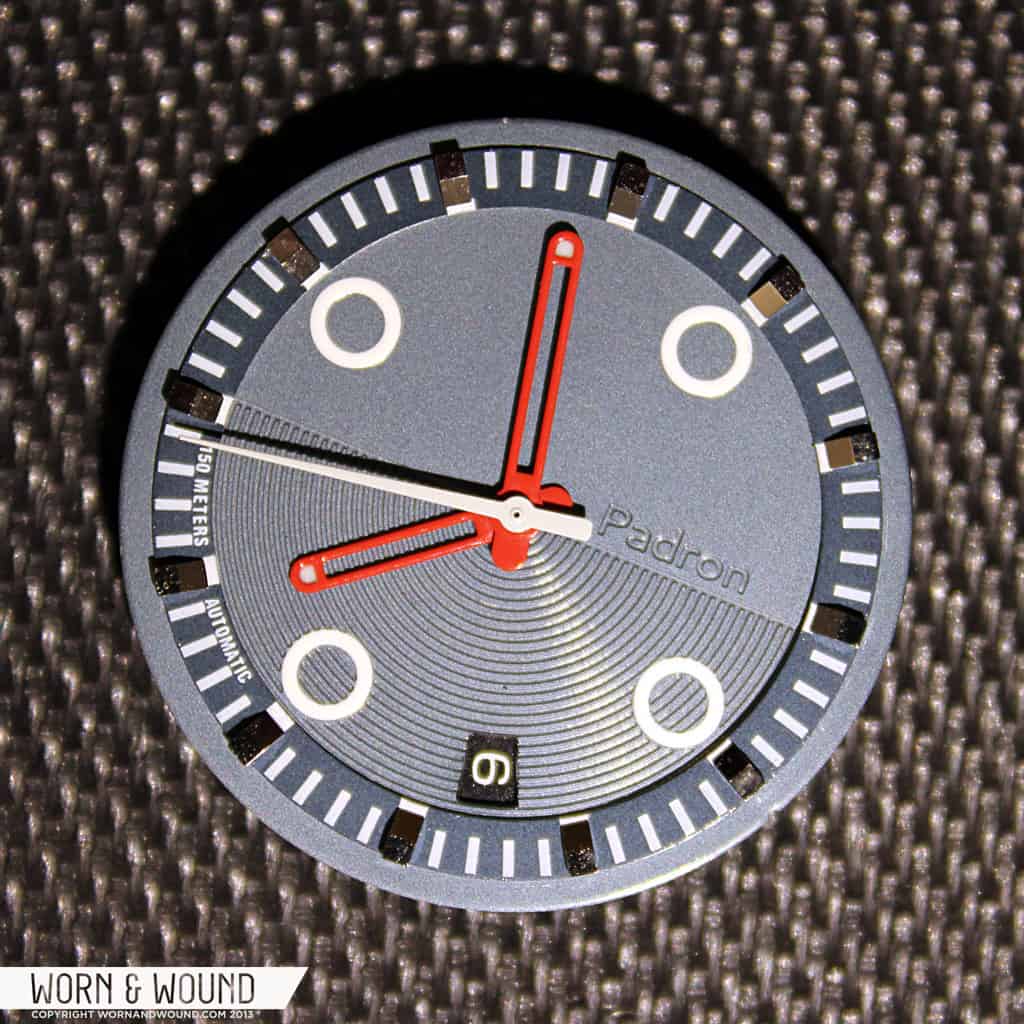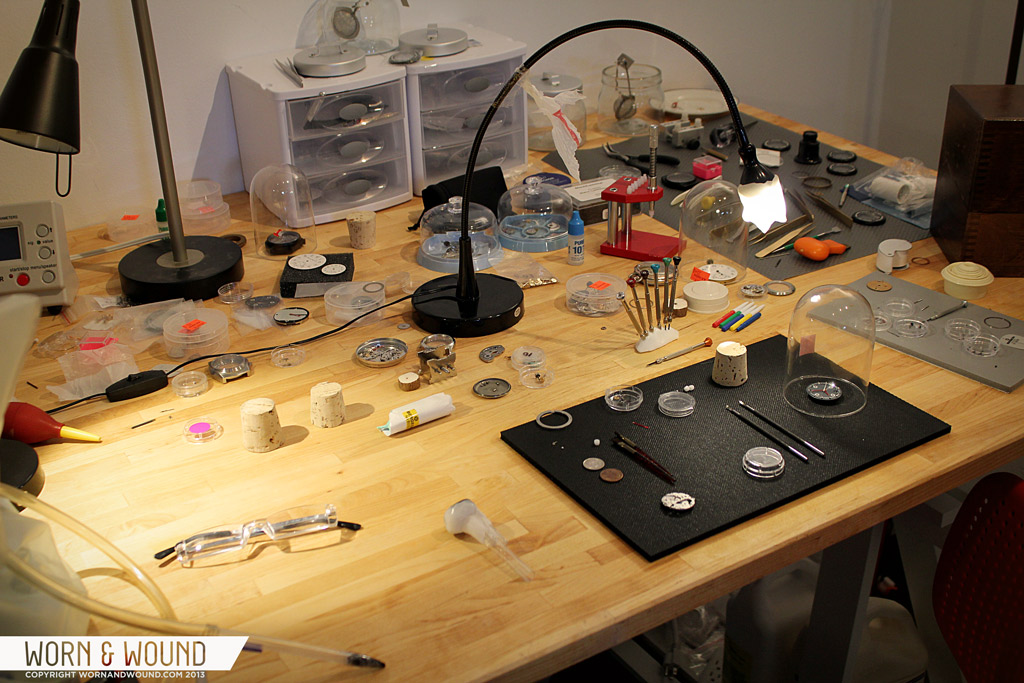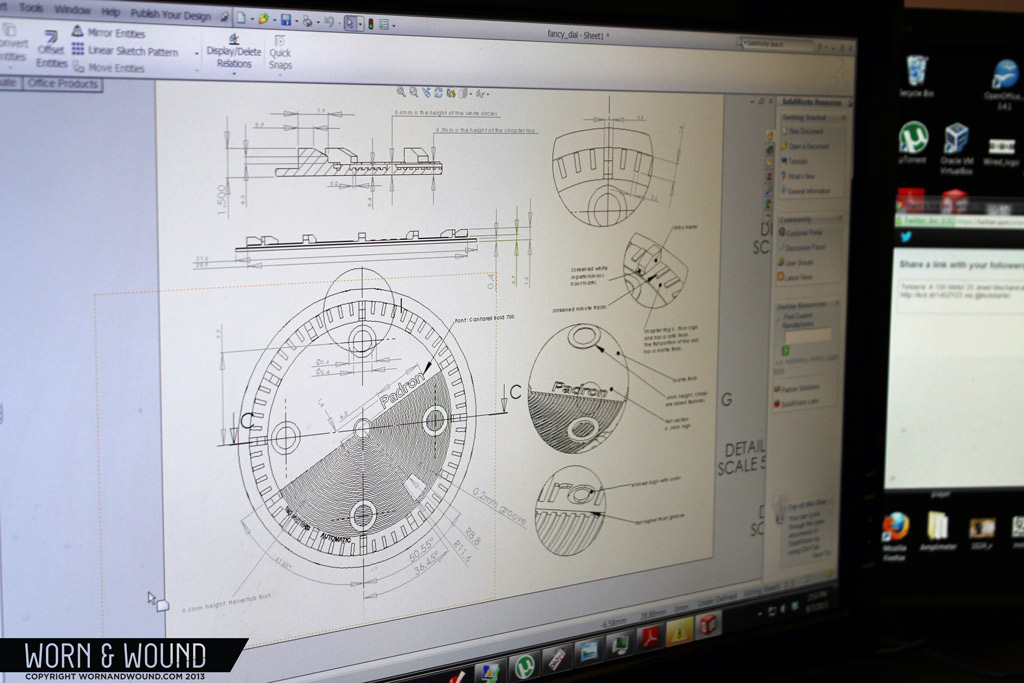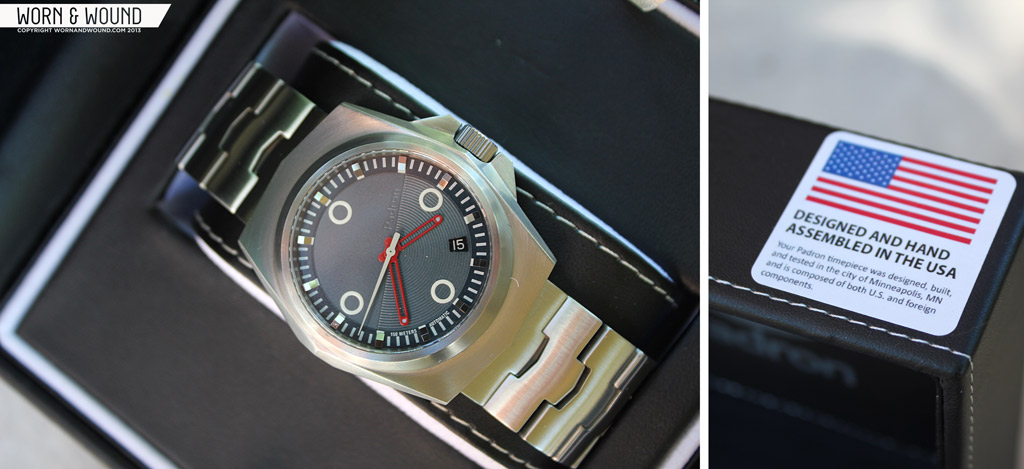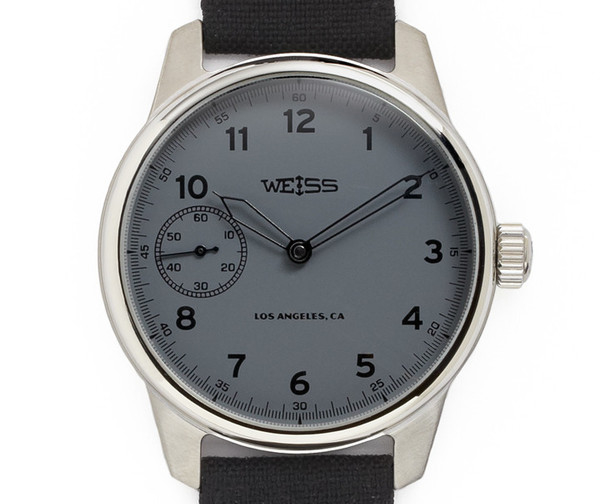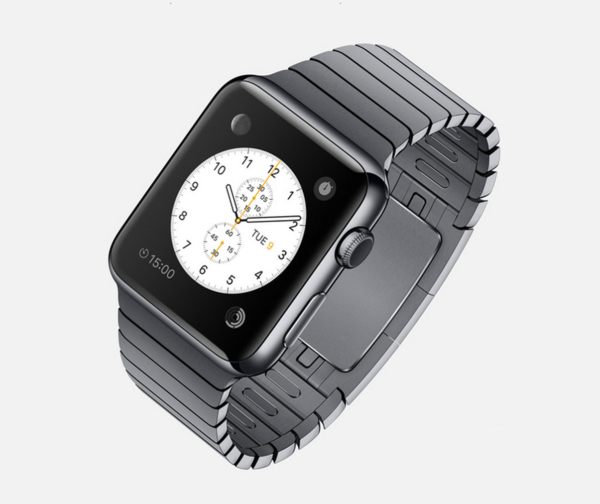The Padron Watch Company is a start-up operation in an office building located at the edge between a light industrial area and a residential neighborhood in Minneapolis, MN.
 Leo Padron is a friendly energetic, passionate guy. He’s well-informed and more than willing to talk watches as soon as you walk in the door of his atelier. In fact, when I visited him last week I’d barely introduced myself before he launched into discussing the array of watch parts spread across his bench.
Leo Padron is a friendly energetic, passionate guy. He’s well-informed and more than willing to talk watches as soon as you walk in the door of his atelier. In fact, when I visited him last week I’d barely introduced myself before he launched into discussing the array of watch parts spread across his bench.
To the uninitiated, it looked like a micro-bomb had gone off on the bench. Pieces of watch movements are scattered over several square feet of bench (Leo doesn’t use a classic watchmaker’s bench. Instead, he uses a tall light industrial worktable with a work area of about 3’x4′). Leo assured me he knew exactly which pieces belonged to which project.
Over on a sideboard, trays of dials, movements, and other parts await assembly. This is the staging area of the Padron Tessera, the watch currently in its final days as a Kickstarter project.
Beyond that, twin computer screens sit on Leo’s desk, illuminated by a SolidWorks CAD image of the Tessera’s case. An empty wooden Padron cigar box rests on a nearby credenza. Leo assured me he’s not aware of any relationship between his ancestors and the cigar-making family.
The Tessera is Padron’s second go on Kickstarter. The Vuelta project a year ago was Kickstarter’s first-ever wristwatch funding project. It funded at 490% of goal. The Tessera will fund on August 18th at over 200% of goal.
The Padron Watch Co. is currently a one-man operation. It quickly becomes obvious that it’s fueled as much by Leo Padron’s passion as it is by Kickstarter backers. He does everything: mechanical and visual design, assembly, procurement, handles vendor relations, warranty work, shipping and receiving – the whole nine yards. Early versions of the Vuelta were assembled overseas, but he soon brought that operation in-house in order to be closer to it and ensure the watches are up to his quality standard.
Leo likes to meet his suppliers, actually shake their hands and have conversations with them. He feels this cements the relationships, helps ensure excellent communication, and actually helps him produce better watches. To do this, he attends the Hong Kong Watch & Clock Fair every September, and this year he’ll be doing factory visits as well.
He’s also interviewing watchmakers to help with assembly of the Tessera Kickstarter watches this fall. His atelier easily has the space to house two more workers and it’s clear Leo intends to keep growing. He’s already detailing his next watch in his mind and on his CAD system. When I discovered this, I pressed for details. Leo only smiled.
The Padron Watch Company is still small, but the vision is impressive. Perhaps most impressive is the fact that Leo Padron is self-taught. He’s no stranger to study and hard work. Born in Venezuela and raised on the east coast, he has a degree in political science from Rutgers. He’s worked as a web developer and info technology consultant – self-taught. In fact, that’s how he came to be in Minneapolis. He came to do a gig for Target Corp.
I asked if he’d attended the now-defunct St. Paul Technical College WOSTEP program. He said, no, he’d only attended the “University of the Internet,” to become a self-taught watchmaker and movement expert. (He is familiar with the St. Paul program, however. Tucked away in a bottom drawer of his storage cabinet are several dozen watches and movements he picked up as leftovers of the program when it shut down.) When he decided to begin designing his own timepieces, he taught himself SolidWorks, a high-end CAD (computer aided design) package, popular with mechanical engineers.
Leo began his journey into watchmaking on a path similar to the one many well-known watchmakers have followed – the restoration of vintage timepieces. At the very beginning, he simply wanted to fix his grandfather’s watch. And so he started the Google searches and soaked up everything he could about repairing vintage watches. As he learned, he picked up other vintage pieces, restored them and sold them. He continues this activity today, albeit at a low ebb due to his work with the production of his new watches.
The designs of the Vuelta and Tessera were inspired by those vintage watches, particularly pieces from the 1960s. This is easily seen in the angular tonneau shape and hooded lugs – updated with modern mechanical design principles and current case size trends. The Vuelta was available in two versions – one powered by a Seagull ST21 automatic with sweep seconds hand, the other with a hand-wound Seagull TY3620, with small seconds at 6 o’clock, under the hood.
The Tessera is available in both brushed 316L stainless steel and black PVD coated stainless. The PVD version has a quiet elegance about it, with just a hint of black-ops mystery. While the Tessera not intended to be a dive watch, the case has a sapphire crystal and a screw-down crown, and is water resistant to 150 meters. There’s no need to worry about wearing it in the pool – or the ocean. And you’ve got a choice of several dial colors.
As I write this, I’ve been wearing the Tessera for a couple of days. it wears well, very comfortable, and with a low profile. The unique styling can go either way – dress or casual. If you’re interested, the Kickstarter project runs for a couple more days.
A lot of us would like to put something out into the world that’s uniquely ours. Leo Padron is living that dream right now.
by Ed Estlow









 Featured Videos
Featured Videos




